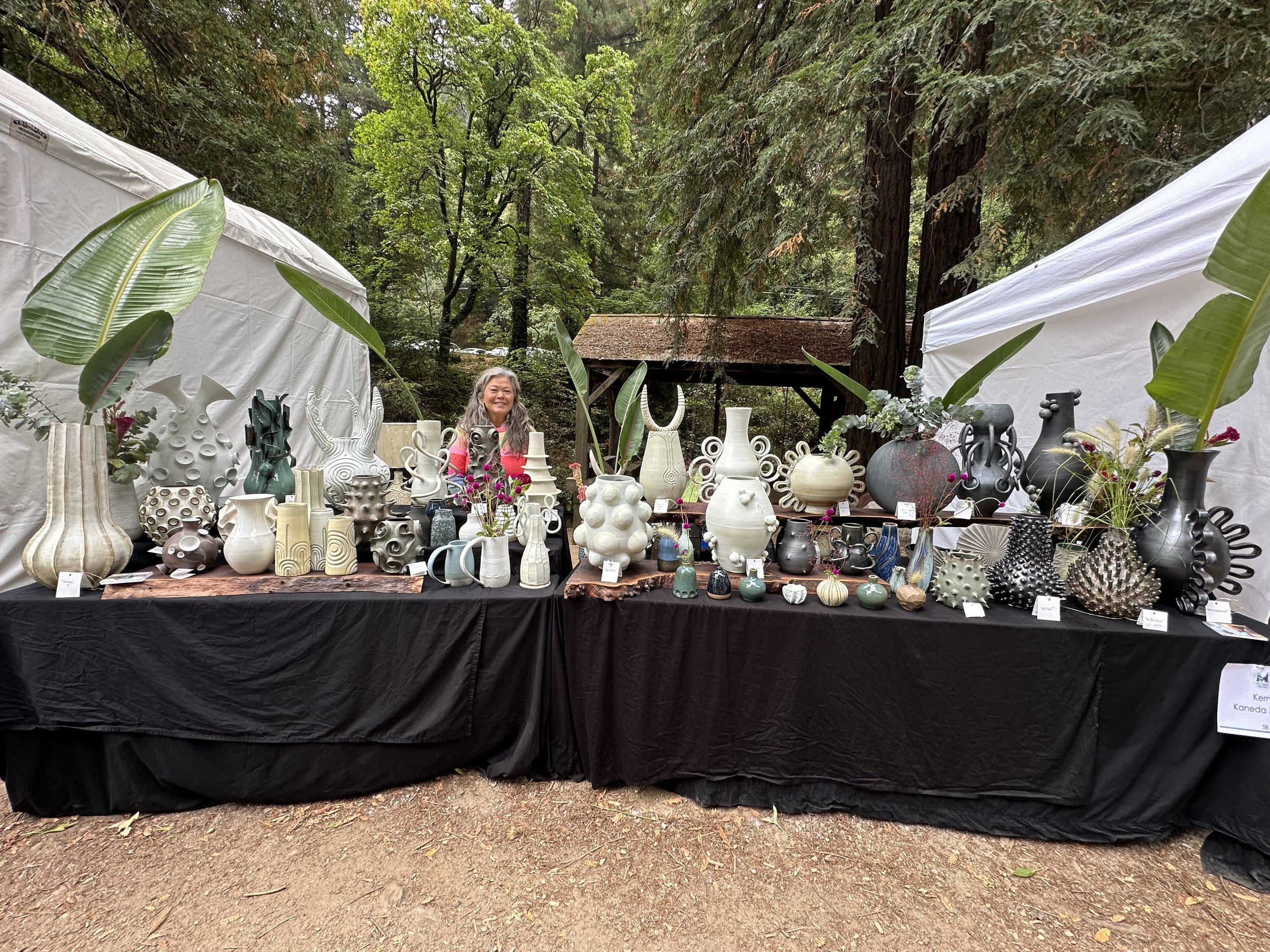
everything is connected…
Kerry Kaneda Meyer is a ceramic and mixed-media Science/Climate Artist. She holds a Master’s of Forest/Environmental Science from the Yale School of the Environment and a Master of Philosophy in Environmental and Natural Resources Economics from Yale University. She has lived and worked in Botswana, where she researched the economic value of the protected areas and national parks with funding from the World Bank and Conservation International. She has also researched water economics in the Pacific Northwestern US, funded by the USDA Forest Service.
These experiences, coupled with being raised in the Sierra Nevada Mountains around Lake Tahoe, are the driving forces behind her work. She thinks about the micro-level, such as closely examining the intricate structure and inherent complexity of individual plants and animals to amplify the observed patterns, symmetries, and textures. As well as more macro-level scales like rivers, tidepools, and other geologic creations as well as interconnected systems, such as food webs, watersheds, and terrestrial and aquatic habitats. She strives to embrace a “sense of place” in her work and frequently utilizes locally excavated rocks and minerals. Her creations range from a meditation on botanical forms and symmetries to the tension between the organic and man-made. Kerry aims to produce work that either highlights a concern or prompts a conversation about current environmental and ecosystem issues.
She has been an Artist-in-Residence at Anderson Ranch Arts Center in Snowmass, Colorado and Haystack Mountain School of Crafts on Deer Isle, Maine. Her work is held in private collections nationally and internationally.
Kerry’s current work is centered on the concept that “Everything is Connected.” She firmly believes that art can educate our world and is critical to promoting environmental awareness and communicating issues of sustainability.